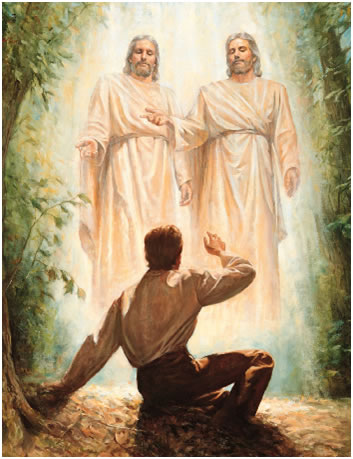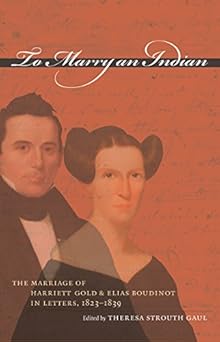A Unique Religious Experience? Why?
A week or so ago I had occasion to teach my students about an amazing conversion experience. We read the account of a relatively young person who was quite anxious about the state of his soul. In the midst of this anxiety, he began praying, but was overcome by darkness and pain during an attack by Satan. Eventually, however, the skies seemed to open, revealing her Savior behind the dark clouds that had obscured him.
Wait, what’s that you say? You think I’m talking about Joseph Smith?
Oh, right—you were probably remembering this account in Smith’s History:
“. . . amidst all my anxieties I had never as yet made the attempt to pray vocally. . . . I kneeled down and began to offer up the desires of my heart to God. I had scarcely done so, when immediately I was seized upon by some power which entirely overcame me, and had such an astonishing influence over me as to bind my tongue so that I could not speak. Thick darkness gathered around me, and it seemed to me for a time as if I were doomed to sudden destruction. But, exerting all my powers to call upon God to deliver me out of the power of this enemy which had seized upon me, and at the very moment when I was ready to sink into despair and abandon myself to destruction—not to an imaginary ruin, but to the power of some actual being from the unseen world, who had such marvelous power as I had never before felt in any being—just at this moment of great alarm, I saw a pillar of light exactly over my head, above the brightness of the Sun, which descended gradually until it fell upon me. It no sooner appeared than I found myself delivered from the enemy which held me bound. When the light rested upon me I saw two Personages, whose brightness and glory defy all description, standing above me in the air. One of them spake unto me, calling me by name and said, pointing to the other—This is My Beloved Son. Hear Him!”
Of course, I can—in retrospect—see how you might have thought that I was describing the first vision of Joseph Smith (especially since I used masculine pronouns to describe my unknown convert). But I was actually talking about a woman named Harriet Ruggles Gold Boudinot (whose letters you can read in this fascinating collection by Theresa Strouth Gaul).
She was most famous for her interracial marriage to the Cherokee Elias Boudinot, but her deathbed conversion experience should, I think, be of interest to every member of the Church of Jesus Christ of Latter-day Saints:
“In the evening her greatest distress commenced. I thought the last struggle had come, and, added to her bodily suffering, there seemed to pass over her mind a desponding cloud. In the agony of her distress she was heard to exclaim, ‘Lord have mercy upon me—my friends, pray for me! Oh, it is terrible to have even one doubt or one cloud!’ She would occasionally say, ‘Patience! patience!’ A friend told her to look to the Saviour, he would not leave her nor forsake her. ‘You feel that you can trust him, and believe that he will do all things right?’ ‘Yes, [188] yes.’ She afterwards, the next day, told Mr. N. that at these times of extreme bodily pain and suffering, Satan, the great adversary of her soul, was trying to take advantage of her weakness, by suggesting doubts and fears, but she had been enabled to look to the Saviour, and that all the clouds which oppressed her were removed—that there was then a clear sky between her and her Saviour. This was but a few hours before she died, and but a short time before she became unable to speak.
“Early in the morning of the last day, 14th, after the most distressing night she had had, she requested a number of her friends to come to her bed. Upon my inquiring how she did, she said, ‘I am in great distress, (meaning bodily distress,) I hope this is the last night I shall spend in the world—then, how sweet will be the conqueror’s song!’ I inquired whether her darkness was removed. ‘Yes.’” (187-88)
It should be clear that the conversion narratives of Joseph Smith and Harriet Boudinot have a lot in common. Why does it matter that we recognize their commonalities? Too often in Latter-day Saint culture, we promote a culture of exceptionalism even though we have a lot in common with other Protestant religious movements of the nineteenth-century. Recognizing what we have in common—restoring the religious context in which Joseph Smith experienced and wrote about his first vision—can help us to see what it is about the Latter-day Saint tradition that is truly unique.
Joseph thought of his vision as a conversion experience, which is why it resembles Harriet’s so much; but you’ll notice a few important differences—A) Joseph actually saw two beings, God the Father and Jesus Christ. B) Those figures were embodied. Those two facts are the key, distinguishing characteristics of Joseph’s vision—the things that differentiated it from many of the competing religious claims of the time.



Comments
I have always been uncomfortable with that attitude of exceptionalism, and then at the same time, irritated with those who ridicule people or predicted events, such as the recent rapture that didn't happen... aren't we then ridiculing the very things that we believe will come to pass? Just that we understand that NO man will know when.